/**
* Quick Find Java Implementation Eager's Approach
*/
package com.weekone.union.quickfind;
import java.util.Random;
/**
* @author Ishwar Singh
*
*/
public class UnionQuickFind {
private int[] itemsArr;
public UnionQuickFind() {
System.out.println("Calling: " + UnionQuickFind.class);
}
public UnionQuickFind(int n) {
itemsArr = new int[n];
}
// p and q are indexes
public void unionOperation(int p, int q) {
// displayArray(itemsArr);
int tempValue = itemsArr[p];
if (!isConnected(p, q)) {
itemsArr[p] = itemsArr[q];
for (int i = 0; i < itemsArr.length; i++) {
if (itemsArr[i] == tempValue) {
itemsArr[i] = itemsArr[q];
}
}
displayArray(p, q);
} else {
displayArray(p, q, "Already Connected");
}
}
public boolean isConnected(int p, int q) {
return (itemsArr[p] == itemsArr[q]);
}
public void connected(int p, int q) {
if (isConnected(p, q)) {
displayArray(p, q, "Already Connected");
} else {
displayArray(p, q, "Not Connected");
}
}
private void displayArray(int p, int q) {
// TODO Auto-generated method stub
System.out.println();
System.out.print("{" + p + " " + q + "} -> ");
for (int i : itemsArr) {
System.out.print(i + ", ");
}
}
private void displayArray(int p, int q, String message) {
System.out.println();
System.out.print("{" + p + " " + q + "} -> " + message);
}
public void initializeArray() {
Random random = new Random();
for (int i = 0; i < itemsArr.length; i++) {
itemsArr[i] = random.nextInt(9);
}
}
public void initializeArray(int[] receivedArr) {
itemsArr = receivedArr;
}
public void displayArray() {
System.out.println("INDEXES");
System.out.print("{p q} -> ");
for (int i : itemsArr) {
System.out.print(i + ", ");
}
System.out.println();
}
}
Main Class:-
/**
*
*/
package com.weekone.union.quickfind;
/**
* @author Ishwar Singh
*
*/
public class UQFClient {
/**
* @param args
*/
public static void main(String[] args) {
int[] arr = { 0, 1, 2, 3, 4, 5, 6, 7, 8, 9 };
int n = 10;
UnionQuickFind unionQuickFind = new UnionQuickFind(n);
// unionQuickFind.initializeArray();
unionQuickFind.initializeArray(arr);
unionQuickFind.displayArray();
unionQuickFind.unionOperation(4, 3);
unionQuickFind.unionOperation(3, 8);
unionQuickFind.unionOperation(6, 5);
unionQuickFind.unionOperation(9, 4);
unionQuickFind.unionOperation(2, 1);
unionQuickFind.unionOperation(8, 9);
unionQuickFind.connected(5, 0);
unionQuickFind.unionOperation(5, 0);
unionQuickFind.connected(5, 0);
unionQuickFind.unionOperation(7, 2);
unionQuickFind.unionOperation(6, 1);
}
}
Output:
INDEXES
{p q} -> 0, 1, 2, 3, 4, 5, 6, 7, 8, 9,
{4 3} -> 0, 1, 2, 3, 3, 5, 6, 7, 8, 9,
{3 8} -> 0, 1, 2, 8, 8, 5, 6, 7, 8, 9,
{6 5} -> 0, 1, 2, 8, 8, 5, 5, 7, 8, 9,
{9 4} -> 0, 1, 2, 8, 8, 5, 5, 7, 8, 8,
{2 1} -> 0, 1, 1, 8, 8, 5, 5, 7, 8, 8,
{8 9} -> Already Connected
{5 0} -> Not Connected
{5 0} -> 0, 1, 1, 8, 8, 0, 0, 7, 8, 8,
{5 0} -> Already Connected
{7 2} -> 0, 1, 1, 8, 8, 0, 0, 1, 8, 8,
{6 1} -> 1, 1, 1, 8, 8, 1, 1, 1, 8, 8,


